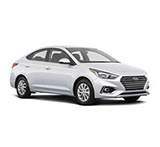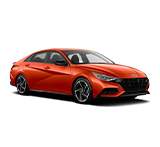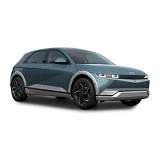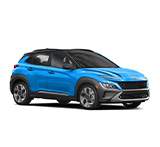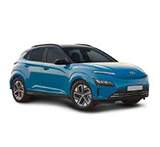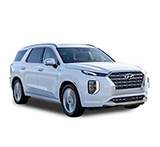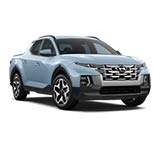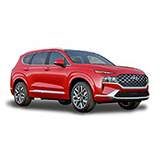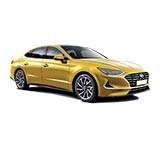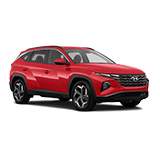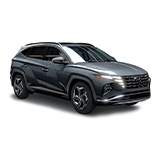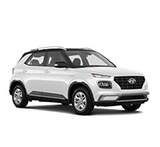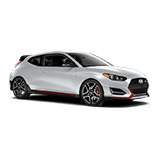Hyundai
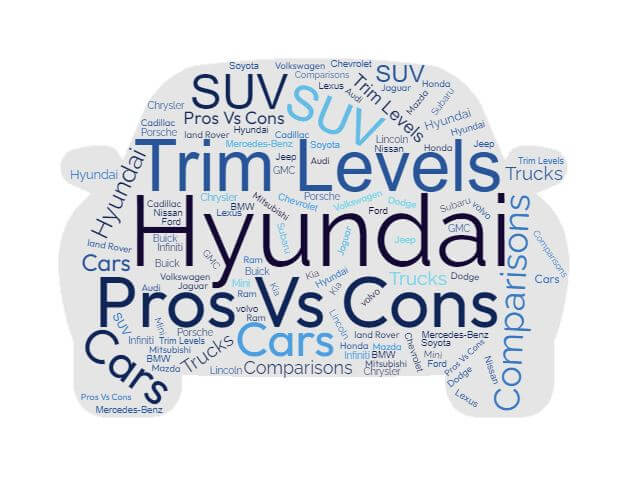
About Hyundai
Hyundai Motor Company is the fourth largest motor vehicle manufacturer in the world. It was founded in 1967, and it's headquarters are located in Seoul, South Korea. It's a division of Hyundai Kia Automotive Group that also operates Kia Motors under its umbrella.
Hyundai's slogan is to "Drive your way." Its logo, the slanted "H" represents the manufacturer shaking hands with its customer. The manufacturer released its first model, the Cortina, in 1968 after it agreed with Ford to assemble and sell the car in the South Korean market. Hyundai continued to produce the car in South Korea until 1976. It was manufactured for a global market until 1982. Between 1968 and 1982, Hyundai went through five production runs of the Cortina.
The Hyundai Pony was manufactured between 1975 and 1990. It had rear wheel drive and was powered by a Japanese Mitsubishi engine. In 1976, the car was exported to Belgium, Luxemburg and Netherlands. Then it was exported to Canada where it became the most popular car on the market. It came in the form of a sedan, pickup, estate (station wagon) and three-door hatchback. The larger of the two engines it came with was a four cylinder 1.4 liter engine that turned 0-60 mph in 15.3 seconds, with a top speed of 92 mph. A 1.6 liter engine became available in 1985. The Pony was never released in the United States due to its inability to comply with emission standards.
In 1986, Hyundai made its debut in the United States with the Excel subcompact car. Because of its price tag of $4,995, over 100,000 Excels were sold in just seven months. Nearly 169,000 units were sold that year. It was a front wheel drive car and produced until 1994. Hyundai introduced it in hatchback and sedan models with a 1.5 liter engine. Although there were some markets where the Excel was sold as a Pony, both had front wheel drive. When serious problems were discovered regarding the quality and reliability of the Excel, sales plunged. The Excel eventually disappeared from the American market.
Rather than retreating from the United States, Hyundai made very significant investments in enhanced design, durability, quality and technology. Sales again increased. A 10 year/100,000 mile powertrain warranty was offered along with any new Hyundai sold in the United States. This proved to be an ingenious selling point as it was unheard of with an affordable car. Hyundai quickly moved up to top ten motor vehicle manufacturers in the world.
By 2004, sales bounced back dramatically in the United States, and JD Power and Associates rated Hyundai with Honda for initial brand quality, having an average of only 102 problems out of 1,000 motor vehicles. This placed Hyundai tied for second in the world for initial brand quality. Only Toyota was on top of it. In 2006, the company made another impressive showing, ranking third in the JD Power and Associates initial brand quality survey. Only Porsche and Lexus ranked ahead of that year.
As Hyundai continues to increase sales in the United States, its investment in facilities across the country also continues to grow. In 2003, the company opened the Hyundai Kia Motors Design and Technical Center in Irvine, California. It also housed a facility for engineering of all vehicles sold in the United States. The company then opened a technical center outside of Ann Arbor, Michigan that opened in 2005. The company's United States technical operations are now housed there.
At a cost of $1.7 billion, the company opened a manufacturing facility in Montgomery, Alabama in 2004. That facility currently employs about 3,000 workers. The plant is over 2 million square feet and occupies over 1,700 acres. It
includes a full assembly facility along with a test track two miles in length. The plant assembles Sonata and Elantra sedans and at full capacity, can produce nearly 400,000 vehicles per year. By virtue of this facility opening, over 70 suppliers to the company have located in North America. Those suppliers created about 5,500 other jobs.
At the same time it opened the Alabama manufacturing facility, Hyundai finished building a testing plant in California City, California. This facility sits on over 4,000 acres and has a 6.4 mile oval track. A 30,000 square foot building is located on the property that houses offices and an indoor testing area.
In 2008, highly regarded Consumer Reports made the Hyundai Santa Fe and Elantra top picks from road tests, predicted safety and reliability. The Elantra received the magazine's highest ranking above 19 other compact cars, surpassing the Honda Civic and Toyota Corolla and Prius models. Global economic conditions deteriorated though, and sales in the United States decreased nearly 50 percent from the year before.
By 2009, four Hyundai and two Kia models were cited by the Insurance Institute for Highway Safety as being among the least expensive vehicles to insure. That same year, the U.S. Environmental Protection Agency also designated Hyundai as the second most fuel efficient auto manufacturer in the country. It was second by a nose to Honda/Acura by .2 miles per gallon.
By 2010, Hyundai rebounded dramatically in the United States. Sonata was awarded the highest safety rating by the National Highway Traffic Safety Agency, and Hyundai was ranked at the top of JD Power's vehicle dependability study.
Hyundai was named the most fuel efficient and least emitting CO2 automobile manufacturer by the U.S. Environmental Protection Agency in 2012. The Sonata was ranked in Consumer Reports as another top pick, and the Elantra was awarded the North American Car of the Year. JD Power again ranked the Elantra as the highest ranked compact car in initial quality in 2014. Consistent with its mission, Hyundai continues to provide exceptional value for its customers focusing on safety, quality and efficiency into the 2015 year.

